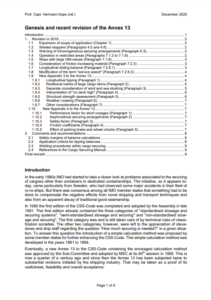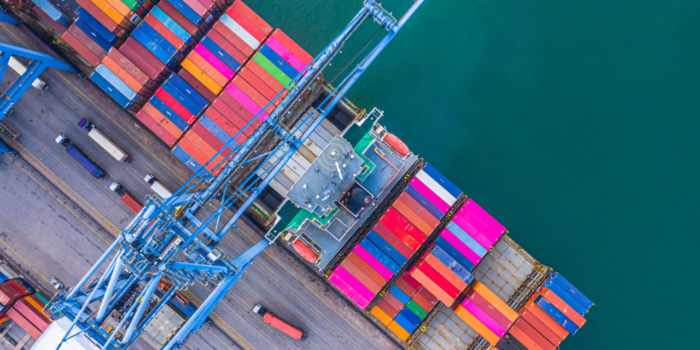IUMI focuses on the amendments made to the Code of Safe Practice for Cargo Stowage and Securing (CSS Code), in regards to weather-dependent lashing, heavy cargo items and semi-standardized cargoes such as vehicles on ro-ro ships, and provides a summary by GDV, German member association.
Accordingly, at its 102nd session, IMO’s MEPC approved a number of amendments to the CSS Code, while various changes have been made to Annex 13. In addition, IUMI’s German member association, Gesamtverband der Deutschen Versicherungswirtschaft (GDV) kindly provided a summary document, with recommendations and comments on these changes.
In the first place, the German Member Association referred to the changes that were made, including:
- Expansion of scope of application
- Welded stoppers
- Warning of inhomogeneous securing arrangements
- Operation in restricted areas
- Ships with large GM-values
- Longitudinal sliding balance
- Modification of the term “service speed”
- New Appendix 3 to the Annex 13
- Longitudinal tipping
- Rotational inertia of large cargo items
- Separate consideration of wind and sea sloshing
- Interpretation of “on deck high”
- Structural strength assessment
- Weather routeing
- New Appendix 4 to the Annex 13
Following the changes, the Association proceeded to a number of recommendations.
#1 Safety margins of balance calculations
First of all, they explain that the brief characterization of the Annex 13 calculation approach in the introduction above has compared it with the method used by classification societies for securing containers in the standardised mode of stowage. There is, however, one remarkable difference. Containers are units designed and fabricated according to ISO-standards. They have a defined structural stiffness and this stiffness is incorporated by class rules into the transverse balance of forces, differentiated for front-end and door-end of the container. Thus the applied securing concept takes the deformation of the container stack under external loads into account.
Such an approach is, understandably, not feasible for the vast variety of non-standardised cargo items.
#2 Application criteria for tipping balances
The newly introduced evaluation of longitudinal tipping and, moreover, of the additional tipping moment, has caused concern about possible extra work load in assessing a securing arrangement.
The association supports that there is no simple criterion available, e.g. like that for transverse tipping of cargo items in road vehicles. There we have a uniform transverse acceleration of 0.5 g and this permits to discard a tipping check if the stabilising lever b is greater than half of the tipping lever a. But on board a vessel we have a variety of transverse accelerations in view of the stowage position and for longitudinal tipping the variation of the vertical acceleration adds to it. Thus the effort to apply the application criterion is the same as for doing the test itself.
They add that
A good reason to check the additional tipping moment is anyway given, when the ordinary tipping moment comes close to the critical limit.
#3 Welding procedures within cargo securing
Temporary welding of fittings and stoppers has now been addressed. They shall be prepared by “qualified welders in accordance with established welding procedures”. This fundamental advice, which certainly includes fire protection measures during welding and also during cutting the fittings after use, should be supplemented by the warning against welding to sensible ship structures made of high tensile steel and to areas adjacent to vulnerable tank coating.
#4 References to the Cargo Securing Manual
Several new provisions in the revised Annex 13 refer to details to be specified in the Cargo Securing Manual. This means explicitly that the manuals of numerous ships have to be updated before the new provisions can beneficially be applied.
Concluding, to learn more on the changes and the Association’s recommendations, click on the report herebelow































































